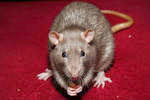The Californica Healthy Schools Act (HSA) law gives parents the right to know what pesticides are being applied at public K-12 schools and licensed day care centers. This law is similar in Washington and other states. The changes to the California HSA, however, expand the scope of intormation for parents and looks to educate school staff on least-toxic pest control methods. "Less pesidicde use mean students and staff have a reduced risk of possible exposure to pesticides, says Senior Environmental Scientist Laurie Brajkovich, of the Department of Pesticide REgulation's School IPM program. This change takes effect January 2015 and affects 10,00 schools and more than 14,500 day care centers. --- As conscientious pest management professionals--PCOEAG members in particular--these changes underscore both the real need to employ solid IPM practices, as well as, public perception around pest control and pesticides. Obviously, integrated pest management makes sense to us. And we have to find the best level of economic and other thresholds where we do employ one pesticide or another. Selecting least toxic products is also important in our practices, and for reasons of public relations as well. ASKING FOR DIALOGUE: To what extent do these efforts help the public get to know about integrated pest management and to waht extent might they cause harm? The possible concern here is the fact that pesticide registration over the past 20 years has seen a dramatic drop in moderate to highly toxic products, yet the level of concern seems to assume that we are yet utilizing DDT or Chlordane. in other words it could go to the point where it's creating more fear than necessary when practices have changed so dramatically. At the same time we can't screen through hundreds of children at a school for the few that might be allergic to a product, even a least-toxic product. FURTHER DIALOGUE: While we as PCOEAG members do need to emphasize the good that IPM will bring, how do we also balance facts around toxicity of pesticides and facts about the "toxicity" (direct toxicity or bites, stings, and spread of disease) of the pests? So, the efforts in California are great, but without also continuing to maintain a balanced flow of information will facts, such as that presence of cockroaches can inflame asthma in chidren, be lost? Pests also pose very real hazards and the public needs to know this as well.








